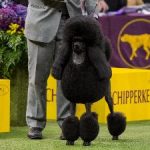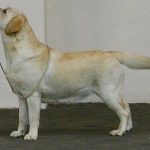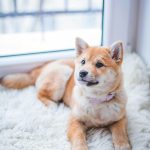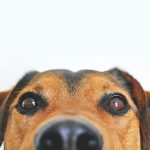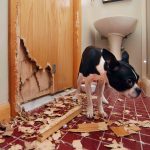Osmological testing methodology
INTRODUCTION
1. The methodology of osmological tests, hereinafter referred to as „Methodology” sets out the tasks carried out by the Police in securing, collecting, duplicating and examining osmological material.
2. Tasks specified in sec.1 are carried out by persons trained in osmology.
3. Activities associated with the preservation of osmological traces shall be documented in accordance with the requirements set out in the Act of 6 June 1997. Code of Criminal Procedure, hereinafter referred to as „k.p.k.”.
4. A protocol shall be drawn up on the collection of reference material.
SECURING EVIDENCE
1. Osmological traces should be secured by a forensic scientist. In exceptional, particularly justified cases, these activities may be performed by another police officer trained in osmology.
2. Osmological traces shall be secured during the visual examination:
1) at the scene of the incident;
2) in the police organizational unit – in case of the lack of possibility to make security at the scene of the event;
3) in an osmological laboratory – if laboratory methods are necessary.
3. Due to the specific nature of osmological traces, they should be secured at the scene of the crime first.
4. Osmological traces should be obtained from specific sites, objects and traces, without limiting their usefulness for other forensic examinations.
5. Exceptionally, osmological traces shall be secured with:
1) from places or objects with which another dog has been in contact;
2) from foodstuffs;
3) from places or objects contaminated with substances of unknown properties;
4) from moist substrates.
6. The cases mentioned in paragraph. 5, should be described in the trace metric
7. To secure osmological traces should be used:
1) brand new absorbers recommended for use by the Central Forensic Laboratory of the Police Headquarters;
2) brand new aluminum foil;
3) brand new glass jars with tight caps – type „Twist”;
4) brand new plastic bags of various sizes – only for short-term preservation of the trace;
5) disposable gloves;
6) metal tweezers or pliers of length approx. 30 cm.
8. Preservation of the osmological trace shall be carried out by contacting the absorbers with the object or place for not less than 30 minutes. The extension of securing time depends primarily on:
1) the presumed time of contact between the person and the surface of the ground;
2) delay time;
3) the type of substrate;
4) Environmental conditions at the place where the trace was left.
9. The object or place from which the osmological trace is secured shall be covered with absorbers and then with aluminum foil .
10. After the period of time stated in paragraph. 8, the aluminum foil is removed, the absorbers are transferred to a jar, which is then sealed.
11. Osmological trace from clothing shall be secured from that part which has been in direct contact with the body. From small parts of clothing and objects shall be secured by enclosing them in a jar together with absorbers.
12. Osmological trace preserved from moist ground should be frozen immediately.
13. Blood traces intended for osmological examination shall be secured as:
1) Dried scrapings placed in a jar;
2) small objects with dried bloodstains placed in jars;
3) moist bloody traces – impossible to secure by the methods described above, are secured directly to absorbers, which, after drying, are placed in jars;
4) if it is not possible to obtain the scrapings – the dried bloody trace, after wetting with distilled water, shall be transferred to the absorbers and further proceedings shall be conducted as in point 3.1. 3.
14. For the technical and procedural preservation of osmological traces, the same procedures apply as for the preservation of other forensic traces.
15. Technical preservation of traces of osmological evidence shall be carried out using the methods described in paragraph. 8. The security of the jars should be made in such a way that opening them is impossible without destroying them.
16. Process security includes description in the inspection protocol (place, object) and the method of technical trace preservation, in particular:
1) labeling the trace with a consecutive number;
2) taking of photographs of the ground from which the trace is preserved;
3) filling in the label and attaching it to the jar in a permanent manner.
17. Exceptionally, in particularly justified cases, osmological traces are secured by laboratory methods, describing these activities in the opinion.
18. Laboratory methods are used only by osmology experts and are used for:
1) securing osmological traces with the use of devices and techniques that cannot be used during visual inspection at the scene of an incident;
(2) reproduction of traces of the osmological.
OLLECTION OF COMPARATIVE MATERIAL
1. The suspect (accused), in accordance with Art. 74 § 2 k.p.k., if it is necessary for evidentiary purposes, he is obliged to undergo collection of blood or body secretions. Within the limits necessary to secure traces and evidence of a criminal offence against their loss, deformation or destruction, in urgent cases in accordance with Art. 308 § 1 k.p.k. blood and body secretions may also be sampled from the suspect.
2. For the collection of comparative material, equipment and materials shall be used as for the preservation of traces of an osmological nature.
3. Comparative material is collected by a police officer trained in osmology.
4. Comparative material may not be collected by a forensic scientist, as well as a police officer who directly participated in securing evidence.
5. The reference material shall be collected in a room free of strong foreign odours.
6. Comparative material is taken from previously washed and dried hands.
7. In special cases, comparative material may be taken from other parts of the body.
8. The time for taking the comparative material is 15 minutes.
9. Comparative material shall be collected on a minimum of 2 absorbers per 1 piece of evidence seized.
10. Comparative material from the collected blood is secured by an osmological expert.
11. In exceptional cases, if it is not possible to take reference material directly from a person, it can be taken from the object (personal item), which is certain that the person had direct contact with it.
12. Collected comparative material is technically secured as evidence by applying a label.
COLLECTION OF CONTROL AND SUPPLEMENTARY MATERIAL
1. Control and supplementary material is collected by a police officer trained in this field, who did not participate in securing and collecting evidence and comparative material.
2. The equipment, materials, and techniques used to collect and secure control and supplementary materials shall be the same as those used to secure evidence and comparative material.
3. The type and selection of control and supplementary materials is decided upon by the osmological expert, adapting them each time to the specifics of the materials tested.
EXAMINATION OF OSMOLOGICAL TRACES
1. The technique and tactics of conducting osmological examinations shall be decided by an osmology expert.
2. The examination shall be carried out using a minimum of 2 osmological examination dogs.
3. The dogs must have valid certificates.
4. Osmological research can be conducted in a laboratory with a current certificate. Certificates are issued by a commission appointed by the Director of the Central Forensic Laboratory of the Police Headquarters.
5. The tests should be performed in a recognition room that meets the following requirements:
1. size and shape should be appropriate for the conditions in which the dogs were trained,
(2) optimum indoor temperature: 18 ÷ 20oC,
3) Optimum indoor relative humidity: 60 ÷ 70%,
4) incandescent lighting or other lighting with similar characteristics,
(5) no sources of negative olfactory, acoustic or visual stimuli that may distract the working dog,
6) absence of sources of strong electromagnetic field near the enclosure,
7) the shape, dimensions and lighting of the room should make it possible to record the course of tests by audio-visual means,
8) equipment:
– (a) closed circuit television system or fixed video camera,
– (b) Dishwasher,
– (c) sterilisation dryer,
– (d) A freezer for the storage of traces from moist substrates,
– (e) laboratory equipment.
6. The dog accommodation should be located near the identification room.
7. The osmological examination shall be carried out by preparing an independent selection sequence for each dog.
8. Other testing tactics may be used that exclude the possibility of being guided by the cues of the dog used first.
9. The following variants of the selection sequence setup are allowed:
1) a range (minimum of 5 positions);
2) circle (minimum 10 stations);
3) other, subject to the approval of the Director of the Central Forensic Laboratory of the Police Headquarters.
10. Control tests are an integral part of each osmological examination.
11. Immediately prior to identification of process materials, control trials shall be performed to determine that:
1) the dog is available for olfactory work;
(2) there are odours in the selection line that interfere with the dog's work.
12. In the control tests, the dog must check all the materials used for the construction of the selection line.
13. A minimum of 3 control tests should be performed (2 tests in the positive control system and 1 test in the negative control system). The number and type of additional control samples shall be decided by the osmological expert conducting the tests.
14. Materials are eligible for osmological testing after a minimum of 24 hours from the time they are secured and collected.
15. The tests shall be carried out „from evidence to comparison material”. In justified cases, tests may be:
1) „from reference material to evidence”;
2) „from evidence to evidence”;
3) „from comparative material to comparative material”.
16. The osmology technician cannot know the position of the materials in the selection line and after each trial, together with the dog leaves the recognition room.
17. During the examination, the osmology technician shall not have direct contact with the materials placed in the selection line.
18. Only an osmology technician with a dog may be present in the recognition room during the examination.
19. The osmological technician may reward the dog during his work.
20. The dog shall operate without a leash.
21. The scent match shall be indicated by the dog in a manner determined at the beginning of the test by the osmology technician.
22. In case of odour incompatibility, the dog shall be returned to the osmological technician. If in two trials the dog does not indicate the existence of an odour match, the test shall be completed by performing an additional control trial, in a positive control pattern.
23. In case of an odour match, no less than 3 trials shall be performed, each time changing the position of the materials in the selection line.
DOCUMENTATION OF TEST RESULTS
1. Research on traces of osmological evidence is carried out in the form of expertise.
2. The course of the tests:
(1) shall be recorded by audio-visual equipment, in the form of illustrative material which is a record of the control and identification tests performed, for crimes classified as crimes;
(2) may be recorded by audio-visual equipment, for offences classified as misdemeanours.
END OF
1. Osmological traces are stored in accordance with current regulations on handling physical evidence in the Police.
2. Any changes, additions or corrections to the Methodology may only be based on methods that have been preceded by an appropriate testing cycle.
Prepared on the basis of decision no. 36/2003 of the Director of the Central Forensic Laboratory of the Police Headquarters dated May 29, 2003. on introducing the methodology of Osmological Surveys (current legal status). The document in the original is signed jointly by the Director of CLK KGP and the Commandant of CSP.
